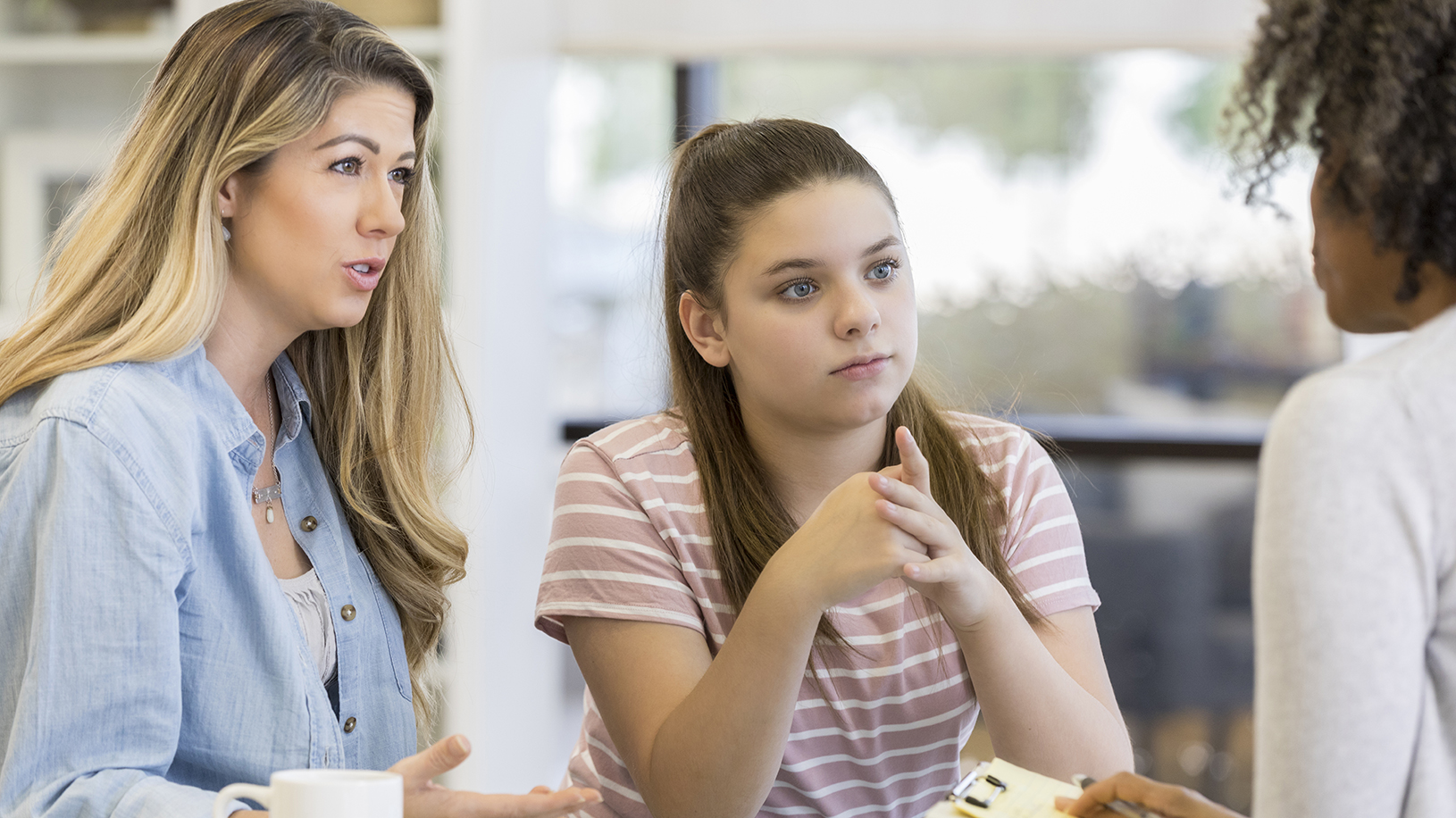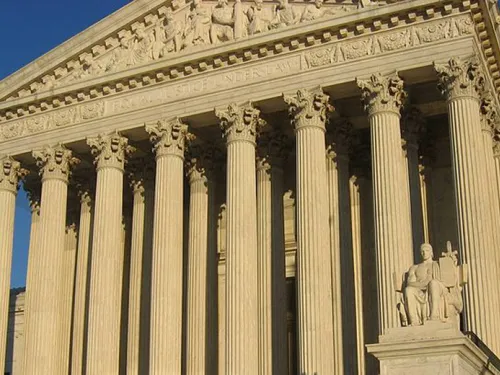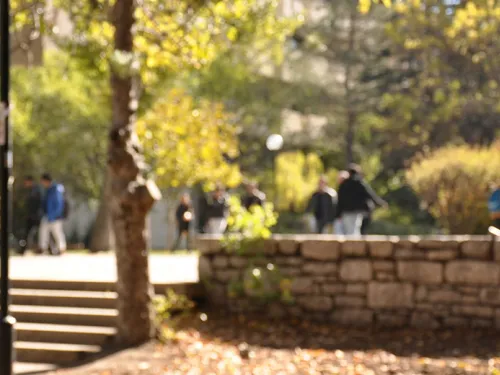
Related Content





Can We Talk? Tips for Respectful Conversations in Schools, Workplaces and Communities

Our K-12 schools are facing a troubling rise in antisemitism. According to ADL’s most recent data, the 2023 Audit of Antisemitic Incidents, antisemitic incidents in K-12 schools increased 135% year over year, with 1,162 reported incidents.
When young people face antisemitism in schools – whether they are being individually targeted or the incident impacts the whole school community – parents and caregivers want to help. They want to understand and address what happened and be part of the solution, both short- and long-term. ADL has created this resource, which provides information about common antisemitic incidents and behaviors that take place in K-12 schools, and it addresses how families can support their children and help make their school more inclusive for Jewish and all students.
When young people face antisemitism in schools—whether they are being individually targeted or the incident impacts the whole school community —parents and caregivers want to help. They want to understand and address what happened and be part of the solution, both short- and long-term.
Supporting Your Child
The first step is to provide care and support for your child. This includes listening to them, hearing and acknowledging their feelings and concerns, exploring what they need and understanding what happened. While you may feel inclined to quickly move into problem-solving mode, take the time to listen to your child, allow them to describe what happened, express their feelings, explain what they need and assess their level of physical safety. Be sure to tell them this is not their fault. To learn more about the mental health impact of antisemitism on young people and how you can help, use our guide, Conversations that Matter: Understanding and Discussing Antisemitism with Young People.
Reporting Incidents
Reporting incidents, even to their parents and families, is not easy for some young people. They may feel hesitant to report bias and bullying to any of the adults in their lives. The data shows that not reporting bullying to anyone is a trend that becomes more pronounced as students get older—the older the student, the less likely they are to report. The reasons vary, but many students feel it will make them more vulnerable to ridicule or bullying and that the situation will worsen. Some caregivers may also fear retaliation—that if they say something to the school, there may be consequences for them or their child. Inquire into school reporting mechanisms to determine if they are safe, confidential or anonymous.
If your child is uncomfortable with you reporting what happened, meet them where they are and make the decision together—when and how to report the incident. Young people should have agency in this process. Parents, families and other trusted adults can help provide the conditions where they can feel safe to report, which hopefully leads to less harm. This will depend on the age of the child, severity and frequency of incident, and the school's practice in dealing with incidents. And remember that reporting the incident may not rise to the level of being reported to school.
Communicating with Schools
When teachers and parents/caregivers work together on behalf of young people, recommendations and solutions to incidents are likely to be more effective and lasting. Unless there are unusual circumstances around an incident or if the incident involves violence or criminal conduct, we recommend this sequence to engage in conversations.
- First talk with your child, using the guidance above. To prepare for this conversation, see Empowering Young People in the Aftermath of Hate.
- If more intervention is needed, talk with your child’s teacher. If the incident was not classroom-based or if your conversation with the teacher doesn’t resolve or satisfy the situation, move to the next step.
- Reach out and talk with a school administrator or school counselor.
Through this process, you may hear from other families that their children are experiencing or witnessing similar behaviors and incidents. Talk with them about what they’re seeing and hearing. However, be thoughtful about approaching a teacher or administrator as a group. Balance the need for more voices with not putting teachers and administrators in a defensive position by overwhelming them.
Keep in mind that some young people may want to speak directly with their teacher, especially if the incident was an isolated one that occurred in the classroom. Self-advocacy is a useful life skill and should be encouraged; high school is the optimal age for self-advocacy, especially on this topic. At the same time, make sure your child has the support and tools to do so. Keep in mind their age and their ability to handle the conversation. Share guidance with them and practice the conversation together in advance.
School, District and State Policies
It is also important to understand that schools, districts and states have their own laws, policies and regulations around bullying, bias, incidents, harassment and discrimination. It will be helpful to become familiar with those policies when addressing issues in your child’s school. On a federal level, Title VI of the Civil Rights Act of 1964 protects all students, including Jewish students, from discrimination and harassment based on their actual or perceived race, color, or national origin, which includes shared ancestry or ethnic characteristics. You can review and share the 2023 Dear Colleague Letter from the U.S. Department of Education’s Office for Civil Rights (OCR).
This resource provides information about common antisemitic incidents (from ADL's Audit of Antisemitic Incidents) and behaviors that take place in K-12 schools. It addresses how families can support their children and help to make the school more inclusive for Jewish and all children. We encourage you to report the incident to ADL, contact the ADL regional office near you and download and share A Guide for Responding to School-Based Bias Incidents.
Individual Targeting*
What is antisemitic targeting?
Individual antisemitic targeting is when someone is targeted with unwelcome, offensive, harmful and biased comments and behavior based on that person’s Jewish identity (or perceived Jewish identity).
Individual targeting can be physical, emotional or social. It can include teasing, name-calling, using slurs, pushing, shoving, hitting or other physical violence, threatening, making assumptions or stereotypes about the target, directing antisemitic and belittling “jokes” at the target, and excluding someone based on their Jewish identity. It can also include Holocaust-related “jokes” and symbols, including using Nazi or Hitler salute, jokes that glorify Hitler or make “jokes” about the events of the Holocaust, or belittling the tragedy of the Holocaust.
Some recent examples include:
- A Jewish middle school student was harassed at school by classmates who stated, "Jews don't believe in Christ. You're going to hell!" and called the student an antisemitic slur.
- A Jewish student was taunted for wearing a kippah and punched on the head.
- An elementary school student approached a Jewish classmate and stated, “Jews are bad people” and “Israel is bombing everyone.”
- A high school student photoshopped a classmate’s face on an image of bodies from a concentration camp, posted it on social media, tagged the classmate and wrote “why she playing with me like I won’t put her back in the gas chamber.”
Being targeted is harmful and potentially dangerous. It can cause physical, emotional or mental harm to the person targeted. It can also result in fear, anxiety and intimidation among others – that they could be the next target – especially if they also identify as Jewish. Holocaust-related “jokes” and statements are intended to demean the memory of the Holocaust, to attack Jewish people and institutions and to perpetuate hurt and harm to Jewish people. They also trivialize the Holocaust, which is particularly serious given the percentage of young adults who think the Holocaust was a myth.
Further, individual targeting can put others, even those who don’t identity as Jewish, on edge because if a Jewish student isn’t protected, it’s likely that others in marginalized identity groups will not be protected. This behavior also impacts the whole school community. If a classroom or school isn’t safe and inclusive for one group of students, it’s not safe and inclusive for all.
What can parents and families do?
First, talk with your child. Initially, prioritize care and support for them by listening, asking how they feel, and what they need.
- Allow them to share and talk as much as they need to.
- When they’re ready to share more details, ask specific questions about the incident in a non-judgmental way.
- Document as many details as possible--what happened, who was involved, where the incident took place, whether there was anyone who witnessed what happened, whether anyone (student or staff) said or did anything to help.
- Ask your child what you can do to help them feel safe and supported, what they need. Rather than trying to solve the problem yourself, engage your child in a thoughtful discussion about options for responding.
- Tell them you may need to share what happened with their teacher or school administrator and therefore, make sure they are comfortable with that, identifying what they need to be comfortable with reporting the incident. Remember that many young people don’t report incidents for fear of retaliation and the situation getting worse for them.
If appropriate, ask for a meeting with the appropriate staff member at your child’s school. If this was an incident isolated to the classroom, start with the classroom teacher. If it happened outside the classroom, meet with a school administrator (Dean, Assistant Principal, Principal, etc.). Recount what you know about the situation, share any documentation and details, describe what happened rather than making accusations, and the explain the incident’s impact on your child. Ask questions about the school’s policies in addressing these kinds of incidents. Convey that you want to work together to solve the problem rather than taking a confrontational tone. Ask for a concrete plan of action before leaving and check in regularly to ensure follow-through. If the problem continues, contact school authorities again (someone higher up in the chain of command if necessary). Be proactive and persistent.
If this situation involves a potential crime (such as hate-motivated violence, vandalism, repeated harassment, etc.), notify the school immediately. For criminal acts, law enforcement should also be notified. You may wish to coordinate with the school on this.
If this is part of a pattern and other students are experiencing the same thing, you may choose to talk with other parents/families about it and think together about how to address it with the school administration. Again, take a problem-solving and collaborative, rather than a confrontational approach.
If and when this particular situation is resolved, encourage the school to address antisemitism in a more comprehensive school-wide way. Propose that the school find ways to teach about the Jewish experience and antisemitism. Encourage teaching about the Holocaust and talk with your own child, as well as encouraging the school to talk about the impact of so-called “jokes” and when jokes are antisemitic, biased or offensive.
*Note that this category does not include bullying and cyberbullying. Although there is some overlap with the behaviors included in bullying and those for individual targeting, bullying has a specific definition, components and school responses. See ADL’s Bullying and Cyberbullying Prevention Strategies and Resources for more information.
Swastikas and Other Antisemitic Graffiti
What are swastikas and other antisemitic graffiti?
Swastikas and other antisemitic graffiti, symbols and words scribbled and drawn in places send messages of hate, bias and antisemitism. The swastika is the most significant and notorious of hate symbols, antisemitism and white supremacy.
Examples include images of swastikas written on walls, notebooks, and locker rooms in various forms. It includes derogatory slurs and other offensive, hateful and vulgar language about Jewish people or that blames all Jews for what’s happening in Gaza; language that is threatening to the safety of Jewish people and anti-Jewish stereotypes.
Some recent examples include:
- Swastika vandalism was found on a Jewish high school student's car.
- Graffiti was found in a high school bathroom depicting a scorecard that read, “Hamas: 1, Jews: 0.”
- A Holocaust exhibit at a middle school was vandalized.
These incidents can often be traumatic for students (Jewish and non-Jewish) and staff, creating an environment of fear and intimidation.
What can parents and families do?
If your child tells you about a swastika or other antisemitic graffiti in the school or directed at them specifically, see the above guidance about talking and listening to them first so they can express their thoughts, feelings and describe what happened. In gathering details about the graffiti, be very specific about where it is and advise them not to cover it up.
If the classroom teacher or school doesn’t already know about the swastika or other graffiti, inform them about what you know, providing documentation, its whereabouts or photos. Express to them the impact these hateful symbols and messages have not only on your child, but all students and on the school culture as a whole. As mentioned above, when these incidents are acts of vandalism, notify the school immediately for school officials to elevate to law enforcement as necessary. In your conversations with the teacher or school administrator, ask about the extent to which this has happened before, what interventions were used and what is the prevention plan moving forward.
In the aftermath of incidents like these being resolved, encourage that the school provide opportunities for all members of the school community to discuss and process their thoughts and feelings about the incident and bias more generally. While some young people know the meaning and origins of the swastika and other hate symbols, many do not. While prioritizing students who are directly harmed and impacted, encourage teaching about hate symbols – their origins, historical significance, meaning and impact.
Antisemitic Assignments from Teachers
What are antisemitic assignments from teachers?
Assignments from teachers that are antisemitic can include assigning antisemitic reading material or giving writing assignments that may incorporate underlying Jewish stereotypes and tropes, have an antisemitic premise as part of the assignment, ask students to take a viewpoint that is rooted in antisemitism, or an assignment that puts students in the position to defend or advocate for an atrocity like the Holocaust.
Some recent examples include:
- A school assignment was given at a high school that instructed students to play the role of a "pro-Hamas student organizer."
- A middle school teacher reportedly instructed students to write a paragraph about how Hitler was "good for the German economy" and taught students how to draw a swastika.
One of the dangers of antisemitic assignments from teachers are that students may not realize there’s an antisemitic or offensive premise to the assignment. They may get an uncomfortable feeling but don’t understand why, or they may not see it that way at all. Antisemitic assignments impact Jewish students directly and these assignments can cause harm, spread misinformation and perpetuate stereotypes to all students. They can be emotionally upsetting or damaging for students who may identify with the victims or for other reasons. In addition, they may put students in the uncomfortable and upsetting position of defending and/or identifying with the oppressors or perpetrators, inadvertently sending the message that harming Jewish people is okay. In addition, assignments like these can prevent real, critical thinking from happening by oversimplifying complex historical events and human behavior.
What can parents and families do?
If your child tells you about an antisemitic assignment, see the above guidance about how to talk and listen to them first so they can express their thoughts, feelings and share what happened. They may not realize the assignment is antisemitic and if they don’t, you can share with them why and how you see it that way. While you don’t want to make them feel worse, it’s important they understand that the assignment is harmful.
Because this is likely an assignment from a classroom teacher, after talking with your child, reach out to the teacher to have a conversation. If your child is in high school and wants to have the initial conversation themselves, encourage that and make sure they have what they need to do so. Start by asking the teacher to share their thoughts and intentions with the assignment. Then explain your point of view, how you think it’s inappropriate, and the dangerous message that is conveyed through the assignment. Just as students may not realize the assignment is antisemitic, teachers may also not realize it. If relevant, you can also share ADL’s resource on Why Simulation Activities Should Not Be Used.
If the teacher continues to insist on using the assignment, you may need to escalate the situation to a school administrator. Share an example like when students were asked to defend the Holocaust and the issue went all the way to the Superintendent of Schools, who decided the assignment would not be given again.
Rallies, Walkouts and Literature with Anti-Zionist Language
What are rallies, walkouts and literature with anti-Zionist language?
Rallies, school walkouts and literature with anti-Zionist language are events and written materials that use language or rhetoric that opposes Zionism, the movement for self-determination and statehood for the Jewish people in their ancestral homeland of Israel. These events and materials may also use tropes and language that is antisemitic or that demonize Jewish people who feel a connection to Israel. Be mindful that there’s a difference between legitimate criticism of Israel and its policies and criticism that crosses the line into antisemitism.
Some examples include:
- At an anti-Israel high school walkout, student protesters allegedly stated, "We should bring Hitler back" and "Kill the Jews."
- After finding out a teacher had attended a pro-Israel rally, high school students protested in the halls, attempted to push their way into her room, shouted anti-Zionist chants, called her expletives and damaged school property.
- A high school's newspaper published an article claiming that: "The ongoing killing rate suggests that the death toll [in Gaza] could surpass that of the Holocaust.”
The language used during these activities, especially rhetoric that attacks, demonizes and threatens Jewish people, can be very harmful to Jewish students. It can create an environment that is both frightening and intimidating and can cause students to feel scared and anxious about coming to and being in school.
It is important to remember that because public schools are considered government entities, First Amendment free speech principles likely apply in these situations. Keep in mind that not all speech is protected by the First Amendment. For example, speech that constitutes a true threat, harassment or incitement is not protected by the First Amendment, and public schools may prohibit speech that is substantially disruptive or violates the rights of others. For more information, check with your school or district legal counsel. Even when free speech principles do apply, emphasize that schools are communities and therefore, they must protect all students from bias and ensure that the school environment is safe, inclusive and welcoming for all.
What can parents and families do?
If your child tells you about rallies, walkouts, literature and other activities that use anti-Zionist language, see the above guidance about talking and listening to your child first so they can express their thoughts, feelings and share what happened. Learn as much as you can about the walkouts, rallies or written materials. If appropriate, talk with your child about what you know about free speech, and what is and isn’t protected speech under the First Amendment.
It is likely that these situations impact the whole school community and aren’t isolated to a specific classroom. If so, find out from your school administration their policies and approaches to these situations. It’s possible they have sent out written communication about situations like these or issues in the news. Because most free speech is protected by the First Amendment in public schools, ask the school administration what they can say and do to affirm, support and protect all students in the school community. While some students may be engaging in these activities, encourage administrators to remind students not to attack or use harmful language to describe others, especially other groups of students represented in the school community. This doesn’t mean those students and staff don’t have the right to engage in these activities, but students should be aware of and sensitive to how their words and actions may negatively impact other staff and students, particularly Jewish students. Use our resource, Crisis, Controversy and Activism: Tips and Guidance for K-12 Schools, to learn more.
Every student deserves to feel safe, included and welcomed at school. As a parent or caregiver, you want to be part of a community that embraces an inclusive school environment. Adopting a positive home-school partnership mindset, and engaging in allyship for Jewish and other students who are marginalized, will contribute to making that vision a reality for your child and the school community.
We encourage you to report the incident to ADL, contact the ADL regional office near you and download and share A Guide for Responding to School-Based Bias Incidents.









